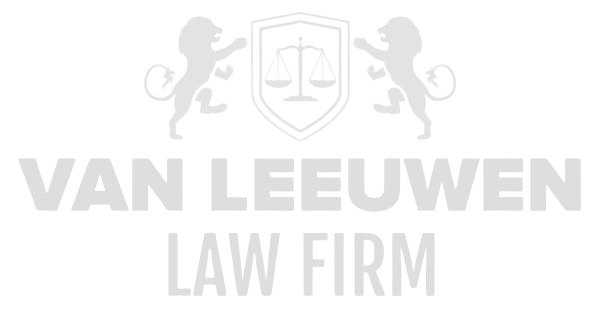In an era where the global economy is becoming increasingly complex, the necessity to not merely combat financial crime but to dismantle it with unprecedented precision and effectiveness has become paramount. Technological innovation emerges as an indisputable and all-encompassing driving force, fundamentally reshaping the contours of the battle against financial offenses. It is no exaggeration to assert that without the application of advanced technological tools, operating effectively within the highly intricate and layered arena of international financial crime would be inconceivable. This arena is characterized by a continuous evolution of tactics and methodologies employed by criminals leveraging cross-border networks and digital infrastructures. The power of technological innovation—from artificial intelligence and machine learning to blockchain and advanced data analytics—has revealed itself as an indispensable arm of justice and enforcement agencies safeguarding market integrity and public trust.
The impact of technological innovation extends far beyond merely detecting criminal activity; it transforms the manner in which national and international corporations, their directors and supervisory boards, as well as government bodies, can defend themselves against the immense threat posed by financial and economic crime. It is well established that such offenses not only severely disrupt the operational continuity of organizations but also inflict irreparable damage to their reputations, eroding trust and diminishing capital flows. The deployment of cutting-edge technologies engenders a paradigm shift in prevention, detection, and prosecution, leveraging real-time monitoring, predictive analytics, and transparency as foundational pillars. This enables judicial bodies and regulators not only to act reactively but to proactively dismantle the intricate web of money laundering, fraud, corruption, and other forms of economic crime.
The Role of Artificial Intelligence in Unmasking Financial Offenses
Artificial intelligence (AI) has evolved into a formidable ally in detecting and analyzing patterns that remain virtually invisible to human perception. By processing vast datasets, AI can identify anomalies indicative of unauthorized transactions or suspicious financial flows. This represents not merely enhanced data processing efficiency but a fundamental change in the expectations surrounding oversight and compliance. Traditional manual control systems are being supplanted by algorithms that continuously learn and adapt to evolving conditions, exponentially increasing the speed and accuracy of detection.
Furthermore, AI enables the development of predictive models that anticipate potential risks even before they manifest as actual violations. This foresight equips regulators and compliance departments to refine and sharpen their strategies based on data-driven insights, allowing interventions at precisely the right moment. Consequently, the investigative scope broadens and deepens, leaving little room for evasion or deception. This contributes to a more robust legal framework in which corporate actors can no longer hide behind complexity or informational asymmetry.
The integration of AI into the fight against financial crime also presents challenges and dilemmas. Privacy concerns, the reliability of algorithms, and the ethical implications of automated decision-making are significant considerations. A careful balance must be struck between technological capabilities and fundamental rights and safeguards, constantly navigating the tension between security and liberty. Nevertheless, the potential of AI surpasses these concerns through the unparalleled transparency and accountability it can generate in a domain traditionally marked by opaque transactions and shadowy dealings.
Blockchain Technology as a Transparency and Integrity Guarantee
Blockchain technology has proven to be a revolutionary development fundamentally altering the landscape of financial transactions. By creating immutable and distributed ledgers, this technology offers an unprecedented level of transparency and control over transactions, significantly reducing fraudulent activity. Every change in a blockchain is traceable, timestamped, and impossible to manipulate without detection, thereby substantially strengthening trust in financial reporting and operational processes.
This transparency also heralds a paradigm shift in how regulators and auditors conduct oversight. Whereas oversight was previously based on sampling and retrospective checks, blockchain enables continuous and real-time monitoring, with anomalies becoming immediately visible. This shortens response times in detecting irregularities and enhances the preventive effect of supervision. Moreover, companies are empowered to strengthen their internal governance by ensuring clarity and data integrity.
Implementing blockchain within financial institutions and multinationals requires a careful legal framework. The blurring of lines between private and public data, handling of personal data, and the legal status of digital assets demand a nuanced approach where innovation and legal certainty coexist. Simultaneously, blockchain opens avenues for new forms of cooperation between businesses and governments, where shared responsibility and transparency can lead to more effective and efficient financial crime prevention.
Real-time Data Analysis and Predictive Analytics
The explosive growth of available data combined with powerful analytical tools enables regulators and companies to gain real-time insights into complex financial transactions. By employing predictive analytics, potential risks and suspicious activities can be identified at an early stage. This surpasses mere after-the-fact detection of wrongdoing; it fosters a proactive posture where interventions occur before damage arises.
These analytical techniques utilize historical data, behavioral models, and statistical algorithms to signal anomalies indicative of fraud, money laundering, or other economic crimes. This results in more effective oversight, allowing resources to be deployed more strategically and substantially reducing the risk of undetected fraud. Furthermore, patterns can be uncovered that point to organized criminal networks, broadening the scope of enforcement efforts.
Integrating real-time data analysis requires significant investment in technology and expertise, but the benefits far outweigh the costs. Organizations that embrace these innovations enhance their resilience and increase their reputational value. Additionally, a culture of continuous improvement and transparency emerges, raising the barrier for financial crime ever higher.
Advanced Cybersecurity as a Prerequisite for Effective Prevention
Financial crime increasingly manifests through digital channels, with hackers and cybercriminals deploying sophisticated techniques to access sensitive information and systems. Ensuring cybersecurity is therefore an absolute prerequisite for effectively preventing and combating financial offenses. Innovations in cybersecurity—such as AI-driven threat detection and end-to-end encryption—enable early recognition and effective neutralization of attacks.
It is evident that a single weak link in the digital ecosystem renders the entire organization vulnerable. The integration of cutting-edge cybersecurity solutions empowers companies not only to respond to incidents but also to proactively identify and mitigate risks. This supports maintaining the confidence of customers, investors, and regulators, and prevents costly reputational damage and financial loss.
Cybersecurity is not static; it requires ongoing innovation and adaptation to evolving threats. This means governance structures, investments, and training must be continuously aligned with the latest technological developments. Only then can a dynamic and effective defense mechanism be built to keep financial crime at bay.
The Impact of Technology on Legal Procedures and Compliance
Technological innovations profoundly influence how legal proceedings related to financial crime are conducted. The availability of digital evidence, forensic data analysis, and automated reporting accelerate and deepen the processes of evidence gathering and case preparation. This not only enhances the effectiveness of criminal prosecution but also of administrative sanctions and civil claims.
The use of technology enables legal teams to gain faster and more thorough insights into complex financial transactions and underlying structures. This allows lawyers and judges to make better-informed decisions, with truth being less susceptible to manipulation or incompleteness. The transparency and traceability provided by technologies such as blockchain further strengthen the credibility of evidence.
At the same time, these developments impose high demands on legal professionals’ knowledge and skills, requiring proficiency in digital forensic techniques and technical expertise. This calls for interdisciplinary collaboration among legal, technical, and financial experts to develop a comprehensive approach. Technology fundamentally transforms the legal landscape surrounding financial crime, along with defense and prosecution strategies.
The Responsibility of Directors and Supervisory Boards in the Digital Age
In the digital era, directors and supervisory boards bear immense responsibility to safeguard organizational integrity against the threat of financial crime. Technology equips them with powerful tools for oversight and risk management but simultaneously demands higher levels of knowledge and decision-making. The complexity and speed of technological advancements require a proactive and anticipatory governance approach.
Directors can no longer hide behind inadequate information or systems; technology makes continuous insight into risks and illicit behavior possible. The legal liability of directors increases accordingly, with negligence or insufficient oversight potentially leading to severe personal and financial consequences. It is therefore essential that governance frameworks are adjusted and directors have access to current, reliable data.
Supervisory bodies must recognize that technological innovation is not merely a tool but an integral part of their controlling function. They should actively participate in the development and implementation of digital oversight mechanisms, ensuring these comply with legal and ethical standards. Only through this can the governance layer be adequately equipped to protect the organization from the often subtle and sophisticated threats posed by financial crime.
International Cooperation and Technology
Financial crime knows no borders; therefore, international cooperation is crucial. Technology enables cross-border information exchange and joint analysis on an unprecedented scale and speed. This fosters a coordinated approach where countries and agencies reinforce each other and jointly confront criminal networks.
By sharing data and synchronizing technological tools, discrepancies and anomalies can be detected more quickly, and legal actions can be coordinated. This is invaluable in a world where financial flows effortlessly cross boundaries and crime increasingly evades traditional jurisdictions. Technology acts as a connecting factor, breaking down silos and stimulating collaboration.
Nevertheless, international cooperation faces obstacles such as differences in legislation, privacy regulations, and technological standards. Continuous diplomacy, legal harmonization, and investment in shared technological infrastructures are required to fully harness the potential of international collaboration. Technology is the key, but only within a framework of trust and shared norms can financial crime be effectively combated.
Conclusion: Technology as an Unavoidable Prerequisite for Effective Combat
The fight against financial crime stands at a critical turning point where technological innovation is no longer optional but an unavoidable prerequisite for success. Its impact ranges from detection and prevention to legal procedures and governance, reinforcing every link in the chain. National and international enterprises, directors, and regulators who fail to conform to this new reality risk not only operational disruption and reputational harm but also legal liability and financial loss.
The combination of artificial intelligence, blockchain, real-time data analysis, and cybersecurity forms the foundation of a new paradigm centered on transparency, speed, and collaboration. This development empowers the rule of law to confront the complex and ever-changing threats of financial and economic crime. In this context, only those who understand and embrace technological advancements will effectively navigate the legal landscape of today and tomorrow.
This is a call to all stakeholders in the financial and governance domains not merely to react but to anticipate and invest in technologies that safeguard integrity and justice. Doing so lays the blueprint for sustainable and robust combat against financial crime that honors the fundamental values of fairness, transparency, and trust.




